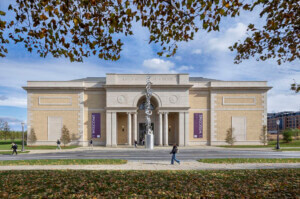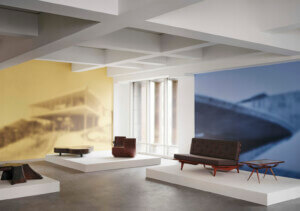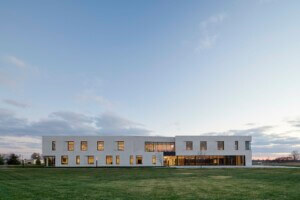You might say that furniture designer Jonathan Nesci is doing things in reverse. Rather than starting his career in a small town and ending with his work selling at auction in the big city, he is making a go at high design in a small community. After working at the Wright design auction house in Chicago, Nesci made the seemingly unconventional move away from the furniture mecca to a small town in south-central Indiana. But that small town was none other than Columbus, Indiana, the modernist playground. Nesci sat down with AN Midwest Editor Matthew Messner to discuss.
The Architect’s Newspaper: Why the move from Chicago to Columbus, Indiana?
Jonathan Nesci: Primarily, my move was a family decision. During the financial mess of 2008–2009, my time at Wright had come to an end and I felt like we needed a fresh start. I felt like I could really work from anywhere, and the thought of my kids getting a chance to grow up in a place like Columbus was and continues to be very appealing. This is not meant to ignore my obvious connection to the architecture, but on a whole the appeal of Columbus is very broad.
Have you found living surrounded by many masterpieces of modernist architecture to be beneficial to your work?
It’s undeniable. It’s energizing to see the Henry Moore sculpture at different times of day, or catch a different view of an Eero Saarinen project that I hadn’t seen before. So much of my design work is informed by the past; I feel very fortunate to get to interact with these places on a regular basis. It’s also encouraging to see some great examples of the built environment really working for people. Architecture and design can make a difference and are doing so here. Not just for me but for an entire community. That’s really powerful.
You are often associated with the architecture community, especially through collaborations and exhibitions. What do you take from those formal or informal relationships?
I’m eternally grateful for the connections to my peers in the design and architecture community. These relationships inform and inspire me. Columbus is my creative island, but it’s important for me to travel and see other ways of working and learn from my contemporaries. I have so much respect for work that rises above the norm, and I admire those who are pioneers in this industry. I feel like my world is all about connections and dialogue.
Your work is directly tied to the manufacturing process. Could you talk about your relationship to the people who make it?
My hope is that the relationship between designer and producer makes both of us better at what we do. This collaboration pushes design and fabrication further, and it’s this fusion of ideas that excites me. I guess the most significant change since moving to Columbus is developing a great relationship with numerous local firms, specifically Noblitt Fabricating. It’s rewarding and beneficial to see multiple projects through with the same team.










